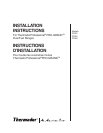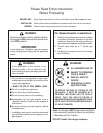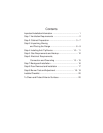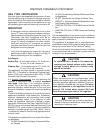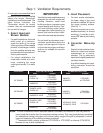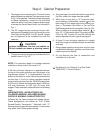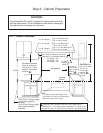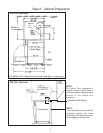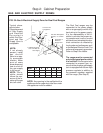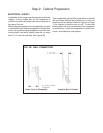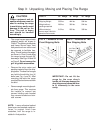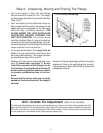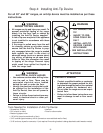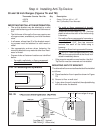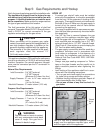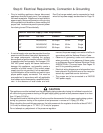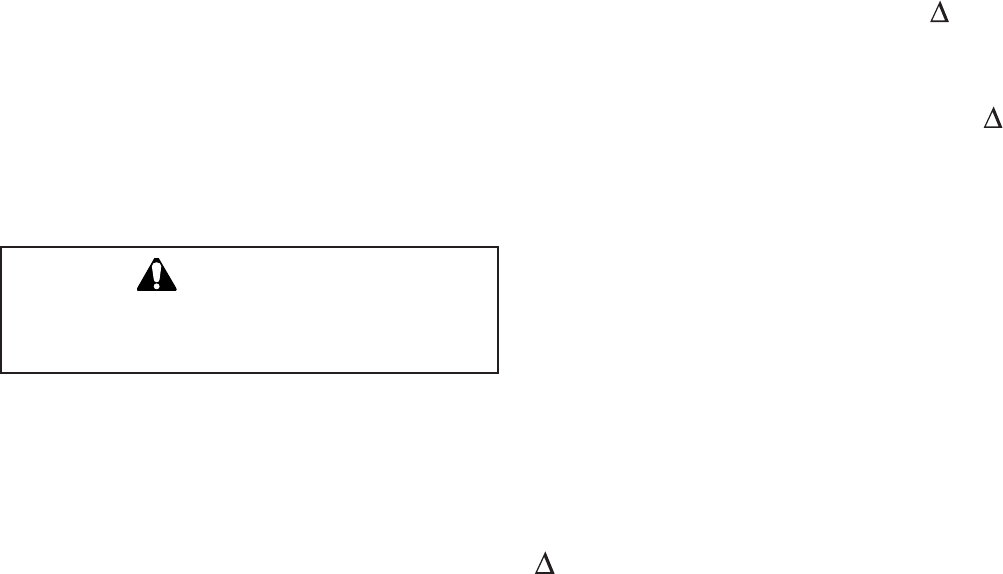
3
Step 2: Cabinet Preparation
1. The range is a free standing unit. If the unit is to be
placed adjacent to cabinets, the clearances shown
in Fig. 1 are required. The same clearances apply
to island installations, except for the overhead
cabinets, which must have a space wide enough
to accept the flared island hood, as indicated in
Fig. 1.
2. The 36" ranges may be recessed into the cabi-
nets beyond the edge of the front face of the oven
(See Figures 2A and 2B). The 30" and 48" ranges
are not approved to be installed flush with the
cabinets.
CAUTION
In these installations, the door and cabinet on
36-inch models can cause a pinching hazard.
NOTE: The maximum depth of overhead cabinets
installed on either side of the hood is 13".
A 36-inch minimum clearance is required between
the top of the cooking surface and the bottom of an
unprotected cabinet. It is recommended that the
bottom of the wood or metal cabinet be protected by
not less than 1/4 inch of a flame retardant material
covered with not less than No. 28 MSG sheet steel,
0.015 inch (0.38 mm) thick stainless steel, 0.024 inch
(0.6 mm) aluminum, or 0.02 inch (0.5 mm) thick
copper. Flame retardant materials bear the following
mark:
UNDERWRITERS LABORATORIES INC.
CLASSIFIED MINERAL AND FIBER BOARDS
SURFACE BURNING CHARACTERISTICS
Followed by the flame spread and smoke ratings.
These designations are shown as “FHC (FIame
Spread/Smoke Developed).” Materials with “O”
flame spread ratings are flame retardant. Local codes
may allow other flame spread ratings.
3. The gas and electrical supply should be within the
zones shown in Fig. 3A.
4. Any openings in the wall behind the range and in
the floor under the range must be sealed.
5. When there is less than a 12" horizontal clear-
ance between combustible material and the
back edge of the range above the cooking sur-
face, a Thermador Low Back or Pot and Pan
Shelf backguard must be installed. (See Fig. 2A).
When clearance to combustible material is
over 12", a Thermador Island Trim may be used.
(See Fig. 2B). Figures 2A and 2B indicate the
space required for each type of backguard.
6. A three (3) inch minimum clearance is needed
when the range is installed beside a combustible
side wall.
7. Always keep appliance area clear and free from
combustible materials, gasoline and other flam-
mable vapors and liquids.
8. Do not obstruct the flow of combustion and
ventilation air to the unit.
As defined in the “National Fuel Gas Code”
(ANSI Z223.1, Current Edition).



